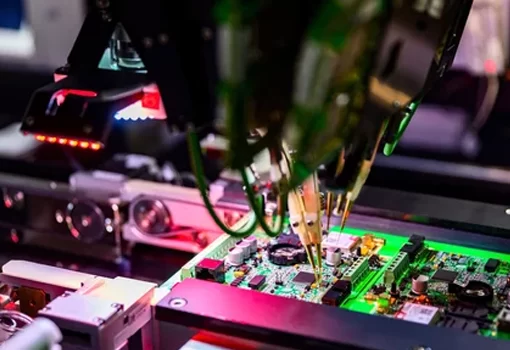
In the latest of our Movers & Shakers series, Frost & Sullivan’s Sriram Venkatraman, Industry Principal – Automotive IT, and Dorothy Amy – Senior Research Analyst – Automotive IOT interviewed Rohit Pande, Country Head – Internet of Things, IBM India/South Asia to learn more about IBM’s digitization initiatives and understand the potential of its IoT platforms in the Indian automotive sector. Key themes covered in the interview ranged from IBM’s C.A.S.E strategy, top IoT use cases targeted by automakers, preferred business models, the ideal cloud and IoT platform strategy, and much more.
Sriram Venkatraman: The future of transportation will be defined by connected, autonomous, shared, and electric (C.A.S.E) technology. What is IBM’s C.A.S.E strategy and vision, especially in South Asia and India?
Rohit Pande: The automotive industry is at an inflection point. Previously, the driving factors for change were business-led, such as expansion into new segments and optimization of operations. However, newer technologies like C.A.S.E are now in the driving seat of dramatic change. The automotive industry is currently faced with increased regulations, fluctuating consumer demand and preferences as well as reduced margins. IBM’s strategy to help the industry overcome some of these challenges is to create an innovation-led, lean and agile development methodology for newer product development & production and extend this to personalized experiences through the entire lifecycle, thereby creating a loyal customer base. As companies move towards systems & software driven innovation across the organization, there is a need to have Digital Twins and Digital Threads across the lifecycle of the vehicle; from concept to production and near-real time feedback to design. We help address this using IBM’s Engineering Lifecycle Management (ELM) solution integrated with IBM’s CVI IoT platform.
Sriram Venkatraman: Frost & Sullivan analysis indicates that OEMs will continue to invest in automotive IoT platforms to generate new value and monetization opportunities for their enterprises. From IBM’s point of view, please tell us how OEMs can successfully implement their digital strategies through IoT platforms.
Rohit Pande: Today’s cars generate vast amount of data from the equipment’s condition to driver behavior. OEMs can use this data to gain insights into equipment health, predict failures, and can use feedback from some of these insights to improve product design using IBM’s IoT platform, ELM tools and Maximo Asset Management software. IBM’s CVI IoT platform extends the power of cognitive computing to connected cars by acquiring data from onboard sensors and systems to improve the in-car experience.
Dorothy Amy: The IBM Watson IoT platform is used by several automakers, including BMW, Honda, Ford, and Local Motors. What are the current and future use cases targeted by OEMs leveraging the IBM Watson platform?
Rohit Pande: The IBM CVI platform has been jointly developed with IBM Research, and has been fueled by our experience of working with multiple auto OEMs across the globe, resulting in over 70 patents in this technology. It is provided as a Software as a Service (SaaS) model to all auto OEMs and we have a dedicated product development team that works on future enhancements. Some of the current use cases targeted by OEMs include map matching, driving behavior analytics, vehicle health, user-based insurance (UBI), with futuristic use cases being cognitive routing, and complex polyline geo-fences, among others.
Dorothy Amy: At our recent Intelligent Mobility events held in Delhi and London, it was evident that IoT platforms will be the backbone of digital disruptions in the automotive industry. Do you think India will keep pace with global markets in terms of IoT adoption? How do you see the market for IoT platforms in future, particularly for IBM Watson?
Rohit Pande: In my perspective, India’s auto industry seems to be ahead in the global IoT adoption curve, with most major OEMs having a connected car solution already launched, or about to be launched. In fact, our auto industry can be called the nation’s torchbearer when it comes to the adoption of IoT at scale. For IBM, we see tremendous opportunities for Watson IoT solutions to help address complex engineering and lifecycle requirements, analyze onboard vehicle data in real-time and integrate with other data sources. We will enable our clients to improve maintenance, fleet compliance, and provide new contextual services that create compelling in-vehicle experiences for operators and passengers.
Sriram Venkatraman: Considering optimistic growth and increasing C.A.S.E use cases in India, what are the different business cases that are expected to evolve in the medium and long term?
Rohit Pande: We see growth in sectors like insurance, which is coming out with innovative solutions like pay-how-you-drive (PHYD). This provides differentiation to insurance companies, offers greater benefits to customers, and makes our roads safer. There will be growth in areas like Fleet Management where organizations can monitor a vehicle’s location, driving behavior as well as the health status of the vehicle. For instance, by using vehicle connectivity and insights solutions to collect, analyze, store and act upon secure data, the French insurance company Groupama is disrupting insurance norms.
Sriram Venkatraman: The growth of connected vehicles across the globe will exponentially increase the risk of potential cyber attacks in the industry. What are the common security concerns and demands that you have come across from your customers in the automotive sector?
Rohit Pande: Cybersecurity plays an important role in the development of connected cars as there are multiple touchpoints, starting with the devices that collect data from the cars to the networks and the applications themselves. Security in the whole connected services infrastructure is maintained at various layers such as the sensor / telecommunications device embedded in the vehicle, the cloud infrastructure at the back-end as well as the encryption of vehicle and customer data. The key is to ensure one “designs” a secure system from the start to ensure the digital trustworthiness of data.
Dorothy Amy: Finally, with the surging amounts of data from different peripherals in the car, how are OEMs tackling the challenges associated with data management, cybersecurity and processing? Considering a long-term vision, please help us understand the ideal cloud and IoT platform strategy for leading automotive companies.
Rohit Pande: I believe what’s required is a strong connected vehicle platform that addresses the challenges of ingestion, management and archiving of data, including analytics. In addition to this, OEMs need to partner with strong system integrators that have experience in connected vehicles to put all of this together.
From a long-term perspective, OEMs can seize the opportunity granted by the rise of digital technologies to reinvent their organizations through them – unleashing new experiences, new focus, new ways to work, and new workforce skills. We believe that hybrid cloud and Artificial Intelligence (AI) will redefine the future of the automotive industry. European automotive and related companies like Volkswagen, Moovster, Vinturas and others are already adopting IBM hybrid cloud.
For more information-
Vinay Krishnan
IBM India
+91 9004080278
vinay.krishnan@in.ibm.com
Frost & Sullivan Team
Sriram Venkatraman, Industry Principal, Mobility
Dorothy Amy, Senior Research Analyst, Automotive IoT




